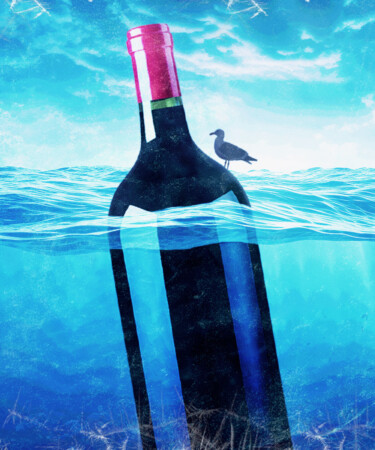Magnums, double magnums, jeroboams, imperials, nebuchadnezzars — large-format wine bottles are a great deal of fun. They not only provide ample opportunity to keep the party going, but they ensure the wine continues flowing with anywhere from twice as much to 20 times as much wine as a standard bottle. For certain styles of wine —Champagne, for example — large-format bottles like magnums are the ultimate size for enjoying the bubbly, as the oxygen-to-wine ratio is larger, thus preserving the wine for longer.
But given the oversized format, storing these bottles alongside other standard-size bottlings can be a bit of a challenge, especially at home where there might be finite space. Moreover, these bottles might not even fit in a refrigerator, so how should one go about chilling them down when the time comes to pop them open?
To learn more about how to properly chill and store large-format bottles of wine, VinePair spoke with Shanna Nasiri, sommelier and owner of Brooklyn’s With Others wine bar.
“Ideally, large-format bottles should be stored on their side, just like standard bottles. That’s really just to keep the cork moist so it doesn’t dry out,” Nasiri says. “But what I think we all struggle with is that the bottles don’t fit on a wine shelf.”
At With Others, Nasiri explains that the top rack of its wine shelves are empty, with all standard-size bottlings stacked below. All magnums are stored on this top rack, separate from any smaller version. That said, she notes that if the bottle is something you’re not planning on aging, storing it upright for a short period of time won’t ruin the wine inside, provided other storage conditions are met.
“If you’re planning on opening the bottle within a few weeks, maybe even up to a few months, I think it’s fine to store it upright,” she says. “But if this is a bottle you’re trying to age for a long time, laying it on its side is really important.”
While it may not be absolutely imperative that magnums, double magnums, and beyond are laid horizontally, it is crucial that other storage conditions are met to prevent your bottle from spoiling. One of those is ensuring that your large-format wine is stored far away from any direct sunlight and is not positioned near a window or any heating or cooling units. Doing so safeguards your bottle from any potential light strike or significant temperature fluctuations, which can result in a cooked wine.
To ensure these conditions are met when storing wine at home, Nasiri recommends doing so in a relatively non-conventional location: a bedroom closet. Not only is a bedroom closet typically away from a window (with doors providing extra protection), but they’re also fairly climate controlled year-round. If there isn’t much closet space, she says storing them under your bed is another great option to reduce any impact from UV light.
“The closet and under your bed stay pretty temperate all year round,” she explains. “Some people store wine in their kitchen, but depending on how close it is to the oven or how often you cook, it really might not be the best place.”
When the time finally does come to crack open your large-format wine, determining how to chill it down if it doesn’t fit in the refrigerator can be puzzling. In these instances, Nasiri recommends placing them in an ice bath with 50 percent water and 50 percent ice. For sparkling wines, you’ll want to let the wine rest in the ice bath for a full two hours, while white wines will need about an hour and a half to do the trick.
“While the wines are in the ice bath, I like to take the nape of the bottle and periodically twirl it around so the temperature can more evenly coat the wine,” she says. “It’s a slow turn, about a half rotation every few minutes, but it makes sure everything is moving around inside the bottle and evenly cooling.”
Once the wine has been thoroughly enjoyed, if there happens to be any left, storing wine from opened large-format bottles differs slightly from that of standard-size preservation. As large-format wine bottles begin to empty, more and more oxygen enters into the glass, meaning the rate of oxidation happens much faster than it does in standard 750-milliliter bottles. Because of this, Nasiri recommends using stoppers like Vacu Vin, which remove excess air from opened bottles of wine to extend their life.
If you don’t have a Vacu Vin at home, re-corking with the same cork and storing it in the fridge (if you’re able) for a short period of time is unlikely to harm the wine. However, to extend the wine’s life even more, and reduce the amount of oxygen it’s exposed to, it’s also fine to pour the leftover juice into a smaller, sealable container before refrigeration.
“The most important thing is to make sure that you’re keeping it in the fridge, which will give you the longest lifespan,” she says. “Or you can just finish it, that’s really the easiest way around all of this, isn’t it?”
